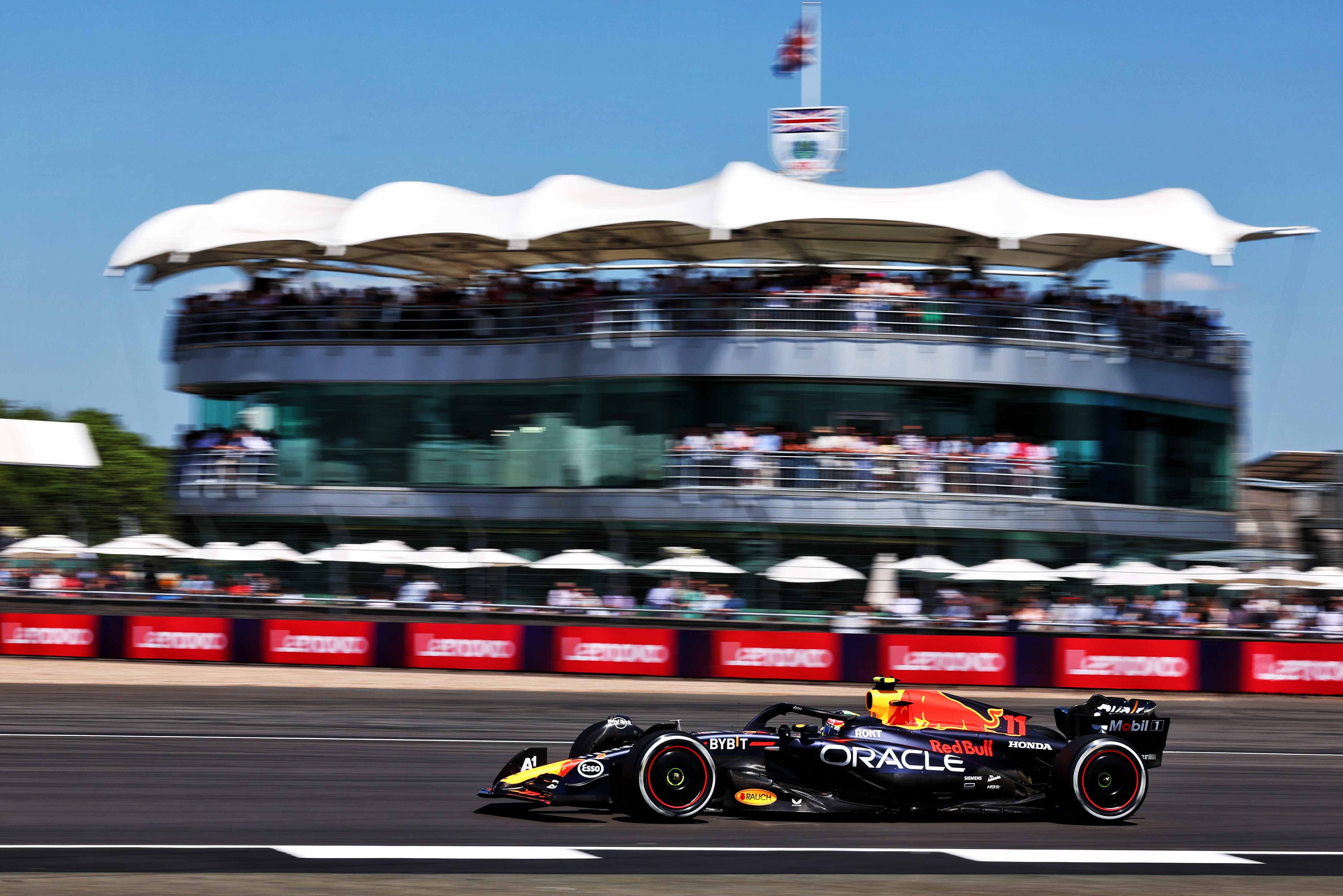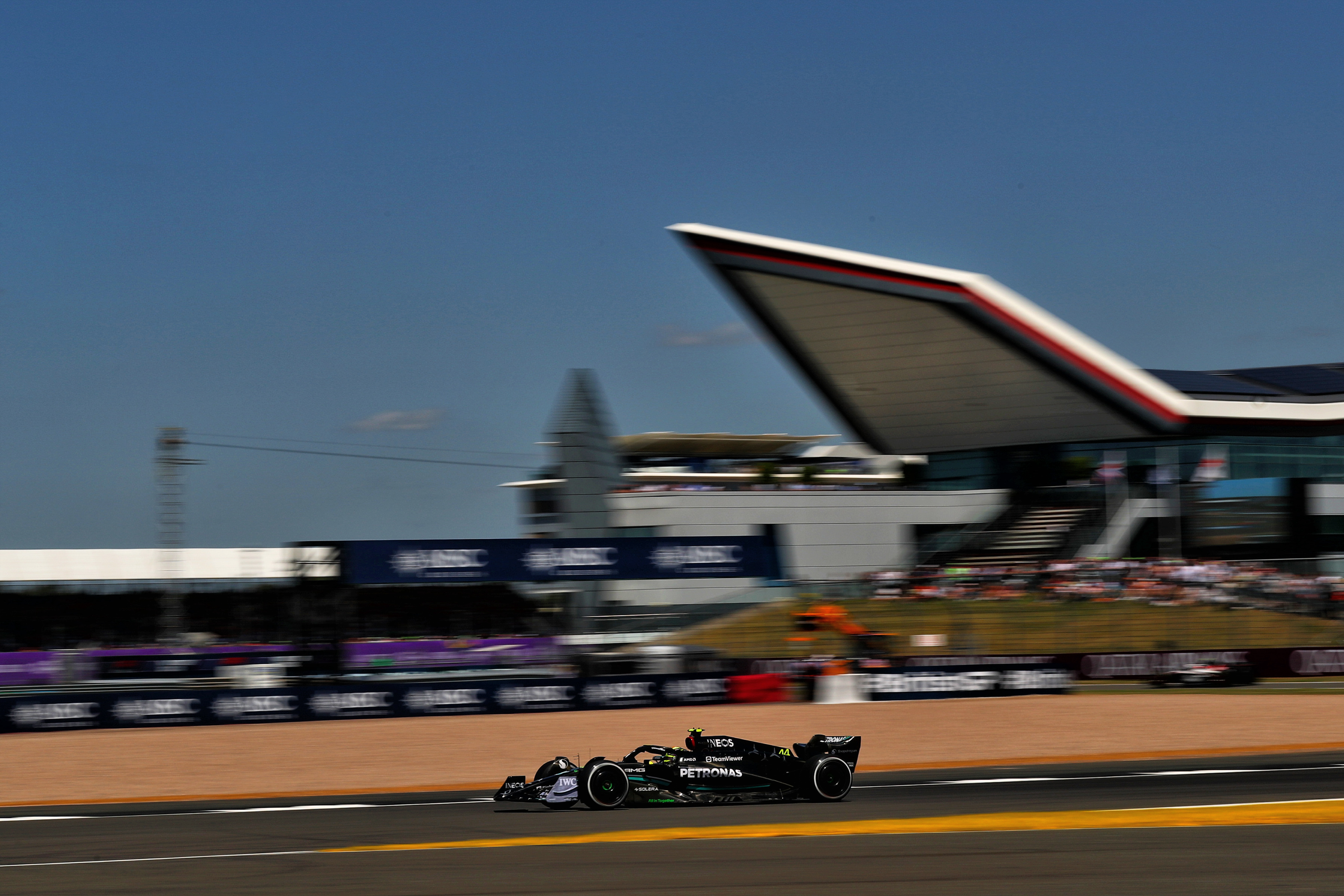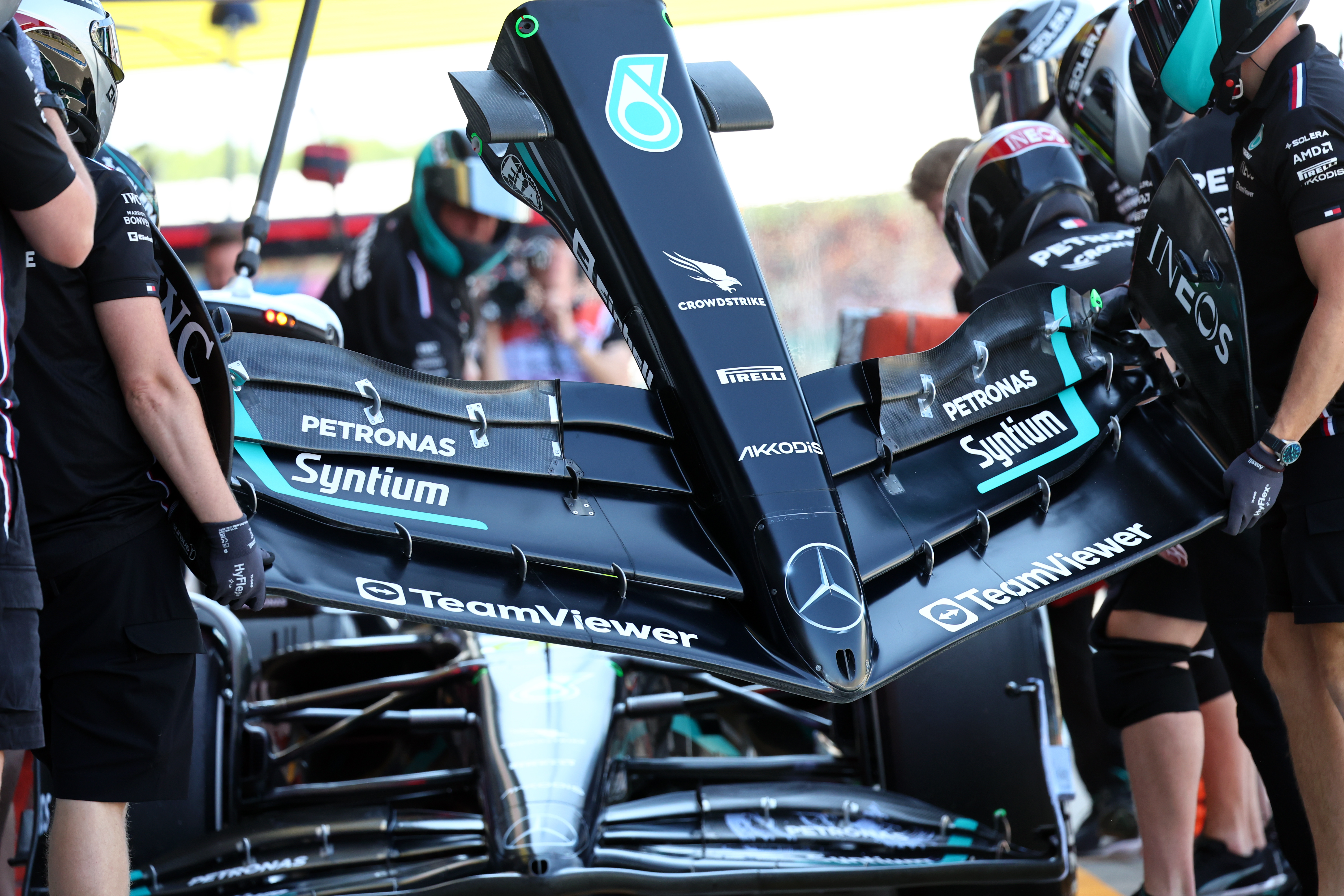British Grand Prix Friday is always an opportunity to take a close look at the latest crop of Formula 1 cars, and spending the first session watching at Brooklands then the second at Abbey was a reminder that when you have a pack of 20 cars all within a couple of seconds there’s not much between them visually. But you can pick out some clear trends.
Whenever a driver is standing on it and gets on the brakes at the end of the Wellington straight to enter Brooklands, it’s usually just down to carrying a little too much entry speed so that either the rear gives up and you have to catch it and miss the apex or the front doesn’t have the mid-corner grip, meaning it washes out.
But this tells you about a fact of life with this generation of ground effect cars: whether you like it or not the ride height will vary because the load is changing significantly between 80km/h coming out of the pitlane and entering Copse at around 300km/h. That means it’s very difficult to keep the aerodynamic centre of pressure of the underfloor stable.
The underfloor itself is very sensitive to the ride height. The front wing is a little sensitive to it but not massively so, while the rear wing doesn’t care about it. But the rear wing is important in terms of making it all work as one with the beam wing and underfloor. In the past I talked about that triple DRS effect – opening the rear wing reduces its effect on the beam wing, which in turn reduces its effect on the diffuser and underfloor.
The same is true the other way around. If you arrive at the end of the straight and the diffuser has stalled it will have had an effect on the beam wing, then when you hit the brakes it’s all about how quickly the airflow can reattach to those rear-downforce-producing components; if it is slow to reattach the rear of the car is nervous on entry. That just illustrates how important it is to make everything work together.

The Red Bull is clearly the best car and making the various parts work in harmony is a big strength. The car has a consistent balance but it’s very clearly not the lowest car watching from trackside. From the BRDC Clubhouse you can look across Brooklands and see the cars side-on and what ground clearance there is. The Red Bull doesn’t look like the lowest car, or indeed the stiffest car.
In fact, the Red Bull looks like a compliant car. We’ve talked about the amount of anti-dive at the front and anti-lift at the rear and in reality that mechanically ‘deadens’ the car a bit because it’s being done to stop the car moving a lot, especially under braking. But if you can run the car softer with the geometry to support the car, the driver can get a decent feel, especially in the slower corners where there is no massive braking requirement. The harder a driver brakes, the more they can feel the car move, but it’s moving on the springs while not being totally locked up mechanically because of the spring stiffness.
That is only worth a few tenths around a lap rather than being night and day as it used to be in the past – but with the regulations being so restrictive, finding a couple of tenths is worth the equivalent of two seconds 25 years ago. It’s all about those tiny details and there’s still a long way to go for others.
When you look at the Red Bull underfloor, it’s clearly seriously complicated. People say it’s not all underfloor, but it is a huge contributor and Red Bull has it right.
Watching the Mercedes, we could see the drivers having to make the odd correction of the rear end, especially in the fast corners which costs laptime. That rear instability has been there all season and although it has improved, it’s clearly still a problem. We saw Lewis Hamilton having to make some mid-corner corrections at Stowe and if that is happening, something unpredicted is happening in the underfloor that’s detrimental to the aerodynamic stability. It shouldn’t really happen after you have committed to to the corner – the mid-corner should be fairly stable, but it doesn’t seem that it is for the Mercedes.

The snappiness of the rear in the high-speed corners is clearly the problem for Mercedes, whereas others have the front end washout – Aston Martin, for example. If you have an unstable rear end on corner entry because of the high g-force, braking which transfers more load to the front end too aggressively means you get a snap on entry. To deal with that, you’d back out the front wing but at the risk of getting a stable car that understeers mid-corner.
Mercedes is leading itself astray with the fact it has a very flexible front-wing flap assembly. It is trying to fix the underfloor problem with the front wing flexing at high-speed. But that’s like putting a band aid on it because to do that you sacrifice overall downforce. However, from what I’ve seen of its car’s problem I’d hate to see Mercedes run with a rigid front wing flap assembly because it would be a nightmare to drive. There is still a long way to go before it has a package that gives its drivers a stable aerodynamic platform.

The Ferrari looks decent. A lot of work has been done to make the car more consistent and benign rather than just chasing peaky downforce gains and that appears to have paid off. Consistent downforce has always been my philosophy – it gives the driver confidence to push and while it doesn’t necessarily give you quite so fast a car it does give you a consistent one, allowing the driver to find his limits without being bitten.
With the limited windtunnel runs and CFD items, it’s essential to have the right research philosophy. If you just chase peak downforce, you will just dig a bigger hole for yourself and get in more and more trouble, doubly so if you are in the middle or at the back of the pack with drivers that have never really experienced a good car.
Just to add to all that, with Silverstone originally being an airfield it is very open so wind and wind direction can have a big effect on aerodynamic stability, so if your car has underlying aerodynamic stability problems it is simply multiplied with crosswinds.
So that’s what really struck me from trackside. You can see the cars that have the best ride and ride control and it’s the drivers in those cars who can consistently attack when they are on quick laps.
And sure enough, it’s the Red Bull that’s the most impressive.



